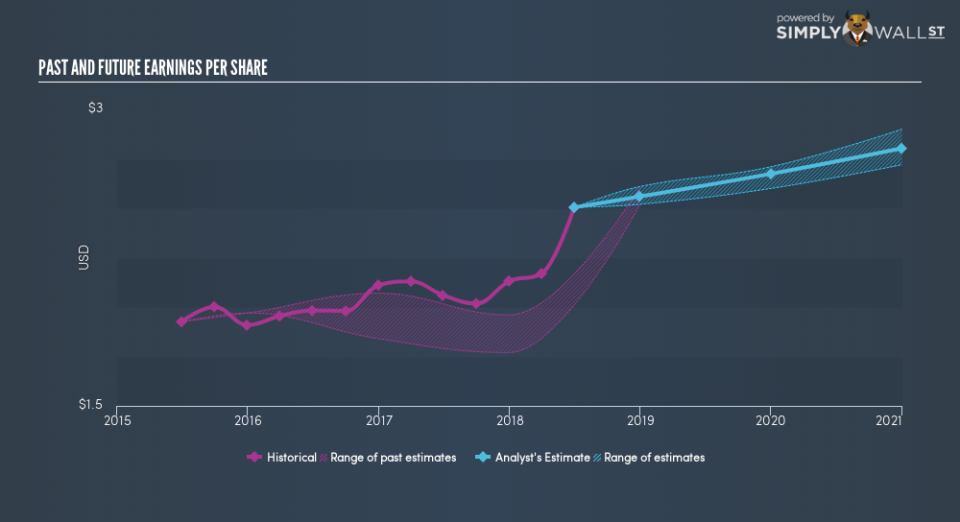Is Financial Institutions Inc (NASDAQ:FISI) On The Right Side Of Disruption?

Financial Institutions Inc (NASDAQ:FISI), a US$511.2m small-cap, is a bank operating in an industry, which has been simplifying their business and operating models over the last few years, both for economic reasons and to reduce organizational complexity. Financial services analysts are forecasting for the entire industry, a highly optimistic growth of 36.8% in the upcoming year , and a whopping growth of 44.6% over the next couple of years. However this rate still came in below the growth rate of the US stock market as a whole. Today, I’ll take you through the sector growth expectations, and also determine whether Financial Institutions is a laggard or leader relative to its financial sector peers.
Check out our latest analysis for Financial Institutions
What’s the catalyst for Financial Institutions’s sector growth?
The threat of disintermediation in the payments industry is both real and imminent, taking profits away from traditional incumbent financial institutions. In the previous year, the industry saw growth in the teens, though still underperforming the wider US stock market. Financial Institutions leads the pack with its impressive earnings growth of 31.6% over the past year. However, analysts are not expecting this industry-beating trend to continue, with future growth expected to be 6.1% compared to the wider banking sector growth hovering in the thirties next year. As a future industry laggard in growth, Financial Institutions may be a cheaper stock relative to its peers.
Is Financial Institutions and the sector relatively cheap?
The banking industry is trading at a PE ratio of 17.91x, relatively similar to the rest of the US stock market PE of 19.86x. This means the industry, on average, is fairly valued compared to the wider market – minimal expected gains and losses from mispricing here. However, the industry returned a lower 8.2% compared to the market’s 10.6%, potentially indicative of past headwinds. On the stock-level, Financial Institutions is trading at a lower PE ratio of 12.82x, making it cheaper than the average banking stock. In terms of returns, Financial Institutions generated 10.5% in the past year, which is 2.3% over the banking sector.
Next Steps:
Financial Institutions is banking industry laggard in terms of its future growth outlook. This is possibly reflected in the PE ratio, with the stock trading below its peers. If the stock has been on your watchlist for a while, now may be the time to dig deeper. Although the market is expecting lower growth for the company relative to its peers, Financial Institutions is also trading at a discount, meaning that there could be some value from a potential mispricing. However, before you make a decision on the stock, I suggest you look at Financial Institutions’s fundamentals in order to build a holistic investment thesis.
Financial Health: Does it have a healthy balance sheet? Take a look at our free balance sheet analysis with six simple checks on key factors like leverage and risk.
Historical Track Record: What has FISI’s performance been like over the past? Go into more detail in the past track record analysis and take a look at the free visual representations of our analysis for more clarity.
Other High-Growth Alternatives : Are there other high-growth stocks you could be holding instead of Financial Institutions? Explore our interactive list of stocks with large growth potential to get an idea of what else is out there you may be missing!
To help readers see past the short term volatility of the financial market, we aim to bring you a long-term focused research analysis purely driven by fundamental data. Note that our analysis does not factor in the latest price-sensitive company announcements.
The author is an independent contributor and at the time of publication had no position in the stocks mentioned. For errors that warrant correction please contact the editor at editorial-team@simplywallst.com.


